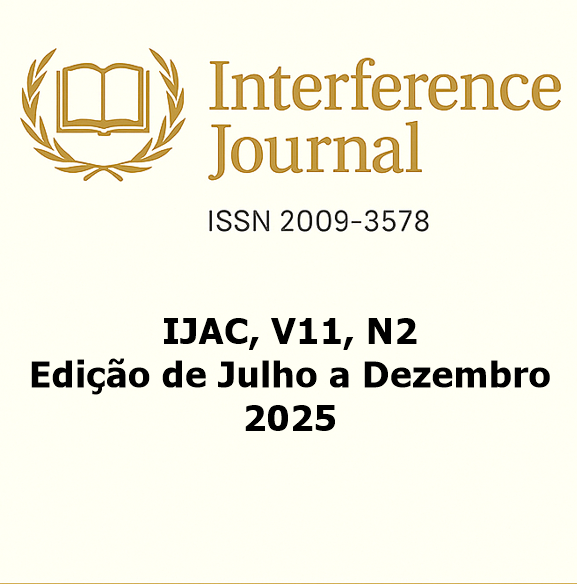Personalized Implantology With Root-Analougue Implants:
Advances in CAD/CAM, 3D Printing, and Biomaterials.
DOI:
https://doi.org/10.36557/2009-3578.2025v11n2p3198-3208Keywords:
Dental implants, Digital implantology, CAD/CAM, 3D printing, Root-analogueAbstract
Modern implant dentistry has been characterized by the pursuit of increasingly personalized and biomimetic solutions, aiming to combine functional predictability with high aesthetic outcomes. Within this context, root-analogue implants (RAI) have emerged as an innovative alternative, as they faithfully replicate the natural root morphology and allow immediate placement after tooth extraction, preserving alveolar bone and peri-implant soft tissues. This study presents a narrative literature review based on seventeen articles published between 2004 and 2025, covering initial clinical applications as well as the development of digital technologies and biomaterials applied to personalized implantology. The studies reviewed highlight significant advances in CAD/CAM systems, 3D printing, and materials such as titanium, zirconia, polyether-ether-ketone (PEEK), and polycaprolactone (PCL), emphasizing personalization as an irreversible trend in the field. Although short-term survival rates of RAI reported in the literature are encouraging, the available evidence remains limited to case series and studies with short to medium-term follow-ups, lacking robust randomized clinical trials. It is concluded that root-analogue implants hold great clinical and aesthetic potential but should still be regarded as experimental, with their widespread adoption depending on further scientific validation through long-term clinical studies.
Downloads
References
ABOUELHUDA, A. M. et al. Maxillary All-on-6 Treatment Using Zygomatic Implants. Bone Loss Evaluation by CBCT: 3-Year Follow-up. International Journal of Prosthodontics, v. 38, n. 1, p. 46-54, 2025. DOI: 10.11607/ijp.8744.
AL-ARDAH, A. J. et al. Using Virtual Ridge Augmentation and 3-Dimensional Printing to Fabricate a Titanium Mesh Positioning Device: A Novel Technique Letter. Journal of Oral Implantology, v. 44, n. 4, p. 293-299, 2018. DOI: 10.1563/aaid-joi-D-17-00160.
CENGIZ, I. F. et al. Suturable regenerated silk fibroin scaffold reinforced with 3D-printed polycaprolactone mesh: biomechanical performance and subcutaneous implantation. Journal of Materials Science: Materials in Medicine, v. 30, n. 6, p. 63, 2019. DOI: 10.1007/s10856-019-6265-3.
CHU, S. J.; SALAMA, M. A. Implant Dentistry: Innovations, Improvements Creating an Ever-Advancing Landscape. Compendium of Continuing Education in Dentistry, v. 36, n. 8, p. 612-614, 2015. PMID: 26601333.
EL-SAWY, M. A. et al. Polyetheretherketone subperiosteal implant retaining a maxillary fixed prosthesis: A case series. Journal of Prosthetic Dentistry, v. 132, n. 3, p. 562-569, 2024. DOI: 10.1016/j.prosdent.2022.08.027.
FURZE, D. et al. Clinical and esthetic outcomes of single-tooth implants in the anterior maxilla. Quintessence International, v. 43, n. 2, p. 127-134, 2012. PMID: 22257874.
GANZ, S. D. Dental implantology: an evolving treatment modality. Compendium of Continuing Education in Dentistry, v. 34, n. 8, p. 628-629, 2013. PMID: 24564617.
HEDIA, H. S.; MAHMOUD, N. A. Design optimization of functionally graded dental implant. Biomedical Materials and Engineering, v. 14, n. 2, p. 133-143, 2004. PMID: 15156104.
MANGANO, F. et al. Maxillary sinus augmentation using computer-aided design/computer-aided manufacturing (CAD/CAM) technology. International Journal of Medical Robotics and Computer Assisted Surgery, v. 9, n. 3, p. 331-338, 2013. DOI: 10.1002/rcs.1460.
MANGANO, F. et al. Maxillary ridge augmentation with custom-made CAD/CAM scaffolds. A 1-year prospective study on 10 patients. Journal of Oral Implantology, v. 40, n. 5, p. 561-569, 2014. DOI: 10.1563/AAID-JOI-D-12-00122.
MANGANO, C. et al. Custom-made computer-aided-design/computer-assisted-manufacturing (CAD/CAM) synthetic bone grafts for alveolar ridge augmentation: A retrospective clinical study with 3 years of follow-up. Journal of Dentistry, v. 127, p. 104323, 2022. DOI: 10.1016/j.jdent.2022.104323.
MOUNIR, M. et al. Titanium and polyether ether ketone (PEEK) patient-specific sub-periosteal implants: two novel approaches for rehabilitation of the severely atrophic anterior maxillary ridge. International Journal of Oral and Maxillofacial Surgery, v. 47, n. 5, p. 658-664, 2018. DOI: 10.1016/j.ijom.2017.11.008.
NG, S. L. et al. Benefits and Biosafety of Use of 3D-Printing Technology for Titanium Biomedical Implants: A Pilot Study in the Rabbit Model. International Journal of Molecular Sciences, v. 22, n. 16, p. 8480, 2021. DOI: 10.3390/ijms22168480.
NIKZAD, S.; AZARI, A.; GHASSEMZADEH, A. Modified flapless dental implant surgery for planning treatment in a maxilla including sinus lift augmentation through use of virtual surgical planning and a 3-dimensional model. Journal of Oral and Maxillofacial Surgery, v. 68, n. 9, p. 2291-2298, 2010. DOI: 10.1016/j.joms.2010.02.002.
OWJI, N. et al. Inclusion of calcium phosphate does not further improve in vitro and in vivo osteogenesis in a novel, highly biocompatible, mechanically stable and 3D printable polymer. Scientific Reports, v. 12, n. 1, p. 16977, 2022. DOI: 10.1038/s41598-022-21013-w.
PARK, J. Y. et al. Vertical and Horizontal Ridge Augmentation Using Customized Three-Dimensionally Printed Polycaprolactone Mesh in Atrophic Posterior Maxillae: A Case Report. Journal of Oral Implantology, v. 51, n. 4, p. 326-336, 2025. DOI: 10.1563/aaid-joi-D-22-00007.
PENG, W. M. et al. Bionic mechanical design and 3D printing of novel porous Ti6Al4V implants for biomedical applications. Journal of Zhejiang University Science B, v. 20, n. 8, p. 647-659, 2019. DOI: 10.1631/jzus.B1800622.
Downloads
Published
How to Cite
Issue
Section
License
Copyright (c) 2025 Ana Luísa de Castro e Silva, Flavia Priscila Pereira , Matheus Canova Machado, Ediliana Dias Chaves Campos de Amaral , Diego Barbosa da Silva, Grazielle Eliane Almeida Picote, William Alves dos Reis, Renata Aparecida Rosa de Oliveira, Joice de Oliveira Monteiro

This work is licensed under a Creative Commons Attribution 4.0 International License.
Você tem o direito de:
- Compartilhar — copiar e redistribuir o material em qualquer suporte ou formato para qualquer fim, mesmo que comercial.
- Adaptar — remixar, transformar, e criar a partir do material para qualquer fim, mesmo que comercial.
De acordo com os termos seguintes:
- Atribuição — Você deve dar o crédito apropriado , prover um link para a licença e indicar se mudanças foram feitas . Você deve fazê-lo em qualquer circunstância razoável, mas de nenhuma maneira que sugira que o licenciante apoia você ou o seu uso.
- Sem restrições adicionais — Você não pode aplicar termos jurídicos ou medidas de caráter tecnológico que restrinjam legalmente outros de fazerem algo que a licença permita.


